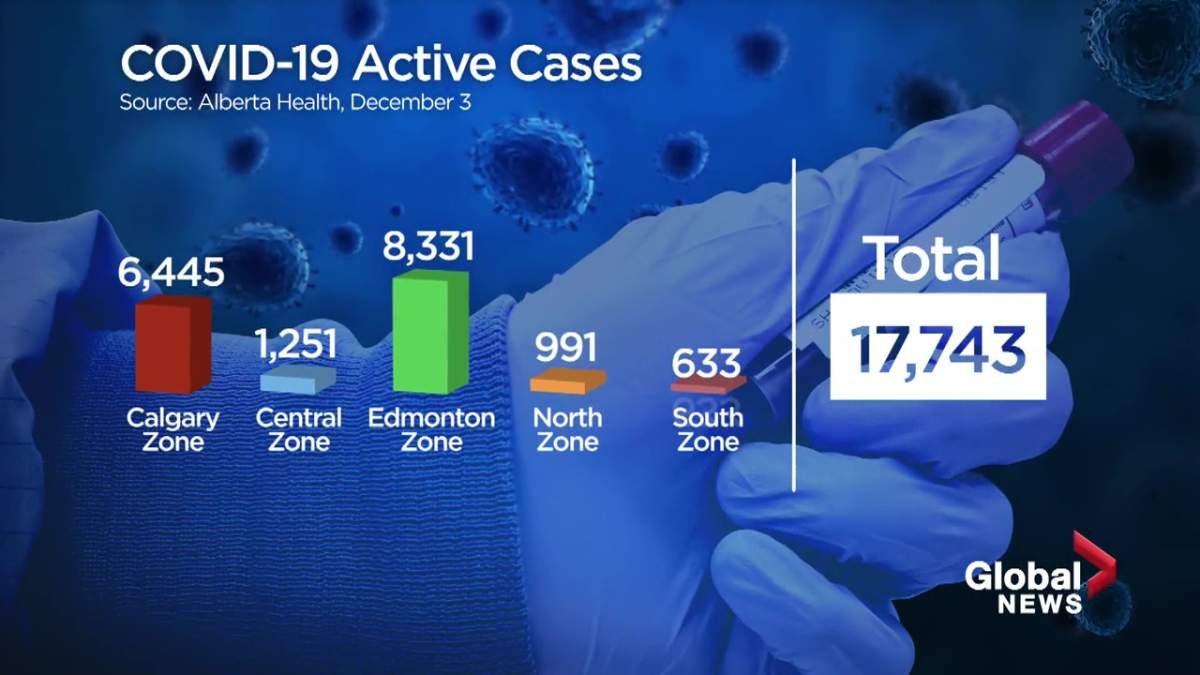Alberta Health Services is looking for even more contact tracers than previously announced, as the number of new COVID-19 cases soars higher almost each day.

The province is aiming to have close to 1,600 contact tracers by the end of 2020, the health authority told Global News Friday. That’s several hundred more than it said it was aiming for a little more than a month ago.
(We are) working extremely hard to bolster our contact-tracing teams,” AHS president Dr. Verna Yiu said at a news conference on Friday. “It has become more and more difficult for our teams to keep up with demand.”
She said that once Alberta has 1,600 contact tracers, it will mean the province will have “36 contact tracers per 100,000 people, which will be on par or better than other provinces.”
The increase in contact tracers comes as Alberta faces a surge of COVID-19 cases: the province has consistently been setting records for daily case numbers.
There were another 1,828 new cases on Friday, bringing the province-wide total number of active cases to 18,243.
There were 533 Albertans in hospital – 99 of whom were in ICU – and 15 more deaths.
Yiu said as AHS continues the “rapid hiring of suitable candidates” to become contact tracers, the positions will largely be filled by licensed practical nurses, registered nurses, dental hygienists, occupational therapists, physical therapists and speech and language pathologists among others.

Get weekly health news
She said AHS has reached out to qualified people through its database and to date, 350 people have expressed interest in helping to fill the gap.
Anyone interested in applying to become a contact tracer can visit ahs.ca/careers for more details.
Yiu said AHS has also signed a contract with a recruitment agency which is expected to bring in dozens of people in two waves: on Dec. 14 and 21. The health authority is also working on finalizing two additional contracts with third parties to help bring in qualified contact tracers.
AHS said it had 50 contact tracers before the coronavirus pandemic began. More people were hired in the spring and by July, there were roughly 300 contact tracers.
As of late October, AHS said there were close to 800 contact tracers and it was in the process of hiring approximately 380 staff to bring the total number to more than 1,100.
“We are rapidly increasing our response to the unprecedented volume of COVID-19 cases in the province,” said AHS spokesperson Kerry Williamson said Friday.
“We are currently in the process of going through the offer process, onboarding, and scheduling orientation for more than 500 additional staff, and a small group have started working already in contact tracing.”
The process of contact tracing involves phoning a positive case, identifying close contacts and following up with those individuals in the hopes of limiting further transmission.
Alberta has faced challenges with contact tracing in recent months, as daily case numbers have surged.
Early in the pandemic, it took Alberta workers about six-and-a-half hours to contact trace a confirmed case, Dr. Kristin Klein, medical officer of health with the communicable disease control team at AHS, told Global News on July 24. The goal was 24 hours.
But as case numbers in the province and the number of close contacts per case rose, it took longer — sometimes several days.
On Nov. 5, AHS announced contact tracers would temporarily be shifted to focus their efforts on high-priority cases until more could be hired.
In the interim, people with COVID-19 who do not meet the high-priority classification “will be asked to notify their own contact of exposures and the need for them to self-isolate and get tested,” chief medical officer of health Dr. Deena Hinshaw said at the time.
Positive cases can now use an online portal to send a text message to their close contacts as opposed to having a contact tracer make those calls.
The province is also no longer conducting contact tracing for positive cases who have already spent 10 days in isolation.
On Nov. 23, Hinsaw said there was a massive backlog when it came to contact tracing and said she had instructed contact tracers to work backwards through their caseloads to deal with the most recent cases first.

— With files from Adam MacVicar, Emily Mertz and Phil Heidenreich, Global News










Comments